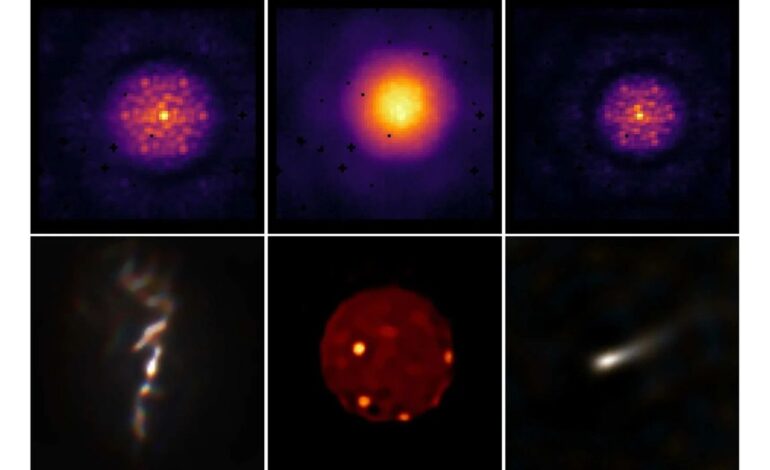AI Algorithm Restores James Webb Space Telescope’s Vision

The James Webb Space Telescope (JWST) has overcome a significant challenge with the development of an artificial intelligence algorithm that rectifies its blurry vision. A team of researchers from the University of Sydney in Australia has designed this innovative solution for the Aperture Masking Interferometer (API), a component critical for enhancing the telescope’s ability to search for exoplanets within our Milky Way galaxy.
The API, while not one of the JWST’s primary instruments, plays a vital role by enabling advanced imaging capabilities for the Near-InfraRed Imager and Slitless Spectrograph (NIRISS). This device combines light from different sections of the telescope’s mirror, allowing for improved sensitivity and resolution. However, upon activation, astronomers encountered unexpected blurriness in the images produced by the API, reminiscent of the optical problems faced by the Hubble Space Telescope shortly after its launch in 1990.
The blurriness in Webb’s images stemmed from electronic distortions detected by its infrared camera. Unlike Hubble, which orbits at a distance of approximately 320 miles (515 kilometers) above Earth, JWST resides much farther away, approximately 930,000 miles (1.5 million kilometers) from our planet. This extreme distance renders human intervention impossible, as no crewed mission has ever traveled that far.
To address this challenge, former Ph.D. students at the University of Sydney, Max Charles and Louis Desdoigts, developed an AI-driven algorithm known as AMIGO, which stands for Aperture Masking Interferometry Generative Observations. This neural network identifies and corrects the pixels affected by electrical charges that distort the telescope’s observations.
Professor Peter Tuthill, who led the research team, expressed relief at the success of AMIGO. “Instead of sending astronauts to bolt on new parts, they managed to fix things with code,” he stated. The algorithm has proven effective, as demonstrated in imaging campaigns of a dim exoplanet and a low-mass star located 133 light-years from Earth.
In addition to these observations, the API, with the assistance of AMIGO, has successfully produced remarkable images of a black hole jet, the volcanic surface of Jupiter’s moon Io, and stellar winds from a distant variable star. Desdoigts, now a postdoctoral researcher at Leiden University in the Netherlands, remarked, “This work brings JWST’s vision into even sharper focus. It’s incredibly rewarding to see a software solution extend the telescope’s scientific reach.”
Since becoming operational in July 2022, the James Webb Space Telescope has transformed our understanding of the universe, uncovering details about the formation of early galaxies and black holes. Its contributions to exoplanet studies, including unprecedented measurements of atmospheric composition, have been groundbreaking. With the API now functioning optimally, the JWST is poised for even more extraordinary discoveries in the cosmos.






